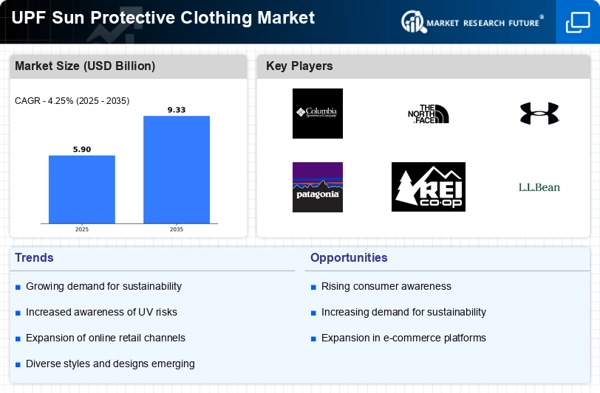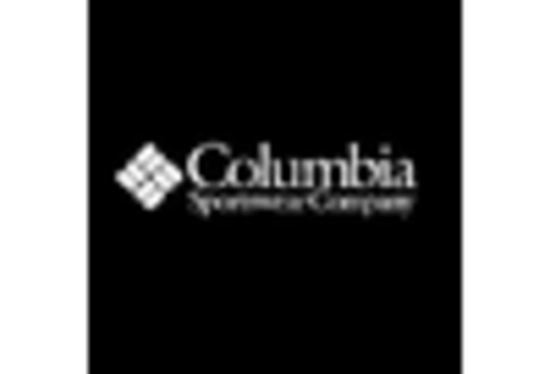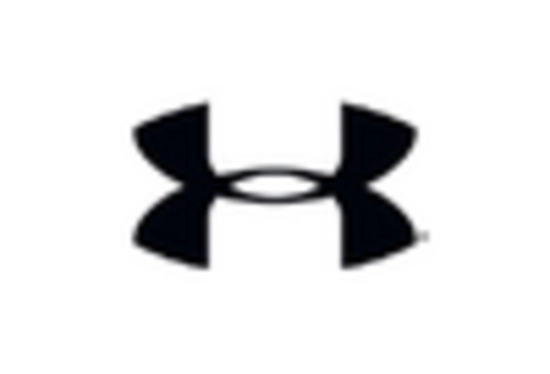Fashion and Aesthetic Appeal
The evolving perception of sun protective clothing as a fashionable choice has positively impacted the UPF Sun Protective Clothing Market. Consumers are increasingly looking for apparel that combines style with functionality, leading to a rise in demand for trendy UPF clothing options. Fashion brands are recognizing this shift and are introducing collections that feature modern designs while maintaining high UPF ratings. This trend is particularly appealing to younger consumers who prioritize both aesthetics and health. Market data suggests that the integration of fashion elements into sun protective clothing has broadened its appeal, attracting a wider audience. As a result, the UPF Sun Protective Clothing Market is likely to experience growth driven by the convergence of fashion and functionality.
Increased Outdoor Activities
The surge in outdoor activities, such as hiking, cycling, and beach outings, has significantly influenced the UPF Sun Protective Clothing Market. As more individuals engage in these activities, the need for protective clothing has become paramount. Reports indicate that participation in outdoor sports has increased, particularly among younger demographics, who are more conscious of sun safety. This trend has led to a greater demand for clothing that not only provides comfort but also offers effective UV protection. Consequently, brands are expanding their product lines to cater to this growing market segment, incorporating advanced materials that enhance breathability and moisture-wicking properties. The UPF Sun Protective Clothing Market is poised to capitalize on this trend, as consumers seek to balance their love for the outdoors with the necessity of sun protection.
Rising Incidence of Skin Cancer
The increasing incidence of skin cancer has become a pressing concern, driving demand for UPF Sun Protective Clothing Market. According to health organizations, skin cancer rates have risen significantly over the past few decades, prompting consumers to seek protective clothing options. This trend is particularly evident among outdoor enthusiasts and individuals living in regions with high UV exposure. The UPF Sun Protective Clothing Market is likely to benefit from heightened awareness regarding the dangers of UV radiation, as consumers prioritize their health and safety. As a result, manufacturers are focusing on developing innovative fabrics that offer higher UPF ratings, thereby enhancing the appeal of their products. This shift towards protective clothing is expected to contribute to the overall growth of the market.
Technological Innovations in Fabric
Technological advancements in fabric production have played a crucial role in shaping the UPF Sun Protective Clothing Market. Innovations such as the development of lightweight, breathable materials with enhanced UPF ratings have transformed the landscape of sun protective clothing. Manufacturers are increasingly investing in research and development to create fabrics that not only block harmful UV rays but also provide comfort and durability. This focus on technology is evident in the introduction of moisture-wicking and quick-drying fabrics, which cater to active consumers. As these innovations continue to emerge, the UPF Sun Protective Clothing Market is expected to expand, as consumers become more aware of the benefits of advanced protective clothing.
Growing Awareness of Environmental Impact
The rising awareness of environmental sustainability is influencing consumer choices in the UPF Sun Protective Clothing Market. As individuals become more conscious of their ecological footprint, there is a growing demand for eco-friendly materials and production processes. Brands that prioritize sustainability are likely to attract environmentally conscious consumers, leading to a shift in purchasing behavior. This trend is reflected in the increasing availability of UPF clothing made from recycled or organic materials, which appeals to a broader audience. The UPF Sun Protective Clothing Market is thus positioned to benefit from this shift, as consumers seek products that align with their values of sustainability and health.


















Leave a Comment